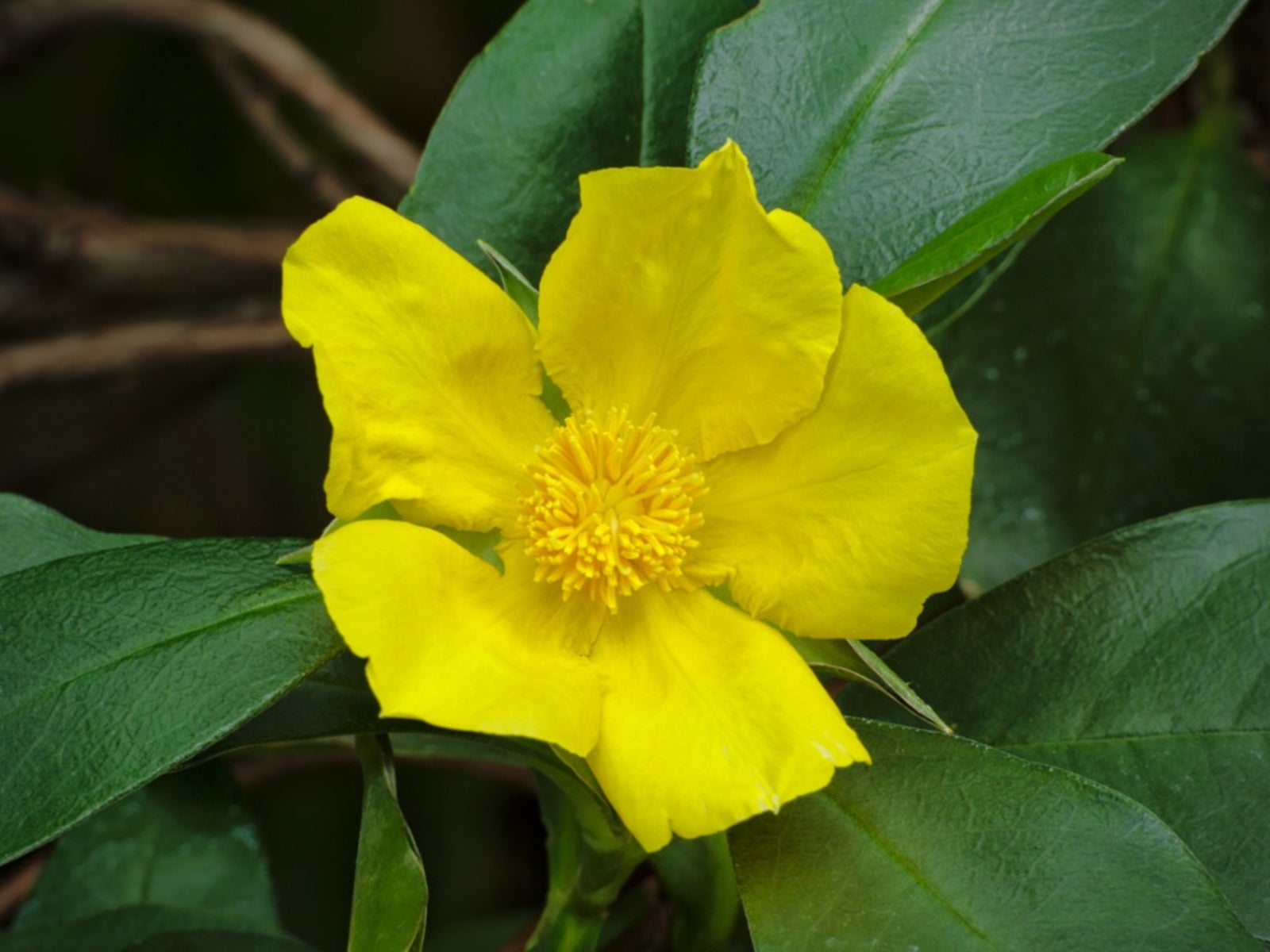Hibbertia Guinea Plant Care - Tips For Growing Hibbertia Flowers


Hibbertia is a naturally occurring plant in Australia, Madagascar, and several other warm climate zones. The plant is variously called guinea flower or snake vine and there are over 150 species of the plant globally, most of which become coated with yellow blooms in spring and summer. Hibbertia plants are suitable for gardeners in USDA plant hardiness zones 10 and 11, and be may be used as annuals in zones 8 and 9. Learn how to grow a hibbertia guinea plant as part of a unique garden floral display.
Guinea Flower Info
HIbbertia plants can grow as medium to large shrubs or as wide reaching, woody, stemmed vines. The snake vine, Hibbertia scandens, produces long stems that range out from the center of the plant in a scraggly manner. These stems do not grow vertically, nor do they self adhere like ivy and other vines. The vine-like stems can get nearly 11 ½ feet (3.5 m.) long. Shrub-like forms, such as Hibbertia empetrifolia, are evergreen and generally hardy and pest free. Provided the plant is grown in an appropriate climate, guinea plant care is easy and maintenance is minimal.
How to Grow a Hibbertia Guinea Plant
These heat-loving plants need to be situated in a sunny or partially shady location. Plants in dimmer light have a more compact habit but will grow more slowly than those in full sun. There are few pests or problems with the guinea flower. It is tolerant of short periods of drought and will usually survive a light frost. You can also bring Hibbertia plants indoors to overwinter. Pot them up in sandy potting mix in a container that drains well.
Growing Hibbertia Flowers from Cuttings
Guinea flower plants are easy to propagate. Share this interesting specimen with a friend. Take cuttings in early spring before flowering and when the plant is pushing new growth. Push the cut end of a 4 inch (10 cm.) stem into a soilless mixture, such as peat or sand. Keep the cutting moderately moist in indirect light. Once it has rooted, repot the new guinea plants into good garden or potting soil. Growing hibbertia flowers from seed is difficult and unreliable. Cuttings are an easy and quick way to produce new plants for your home or garden.
Guinea Plant Care
Plants that are growing outside will need supplemental water in very dry hot periods of summer. Hibbertia plants in the garden are fertilized once a year in spring with a balanced fertilizer. A once a month feed with diluted liquid plant food encourages best growth in potted environments. Feed from March until August, and then suspend feeding during the colder months. Guinea plants benefit from pruning in late winter. Cutting back to growth nodes closer to the center of the plant will help force bushier, more compact growth. Avoid tip pruning, which will make the plant rangier. Potted plants need to be repotted every three years or as the root mass becomes bound in the container. Use a houseplant soil with a few handfuls of sand mixed in for drainage.
Gardening tips, videos, info and more delivered right to your inbox!
Sign up for the Gardening Know How newsletter today and receive a free copy of our e-book "How to Grow Delicious Tomatoes".

Bonnie Grant is a professional landscaper with a Certification in Urban Gardening. She has been gardening and writing for 15 years. A former professional chef, she has a passion for edible landscaping.
-
 Grow ‘Karl Rosenfield’ Peony Plants For The Ultimate Frilly Border Beauties And Cut Flowers
Grow ‘Karl Rosenfield’ Peony Plants For The Ultimate Frilly Border Beauties And Cut FlowersFor frilly double magenta peony petals infused with a heady fragrance, grow ‘Karl Rosenfield’ peony plants. Here’s how to cultivate the ultimate plushy blooms
By Tonya Barnett
-
 10 Common Composting Problems That Can Spoil Your Garden Gold – Plus Easy Fixes
10 Common Composting Problems That Can Spoil Your Garden Gold – Plus Easy FixesLearn how to troubleshoot common composting issues before they ruin your stash – from bad smells and bugs to materials not breaking down as they should.
By Susan Albert